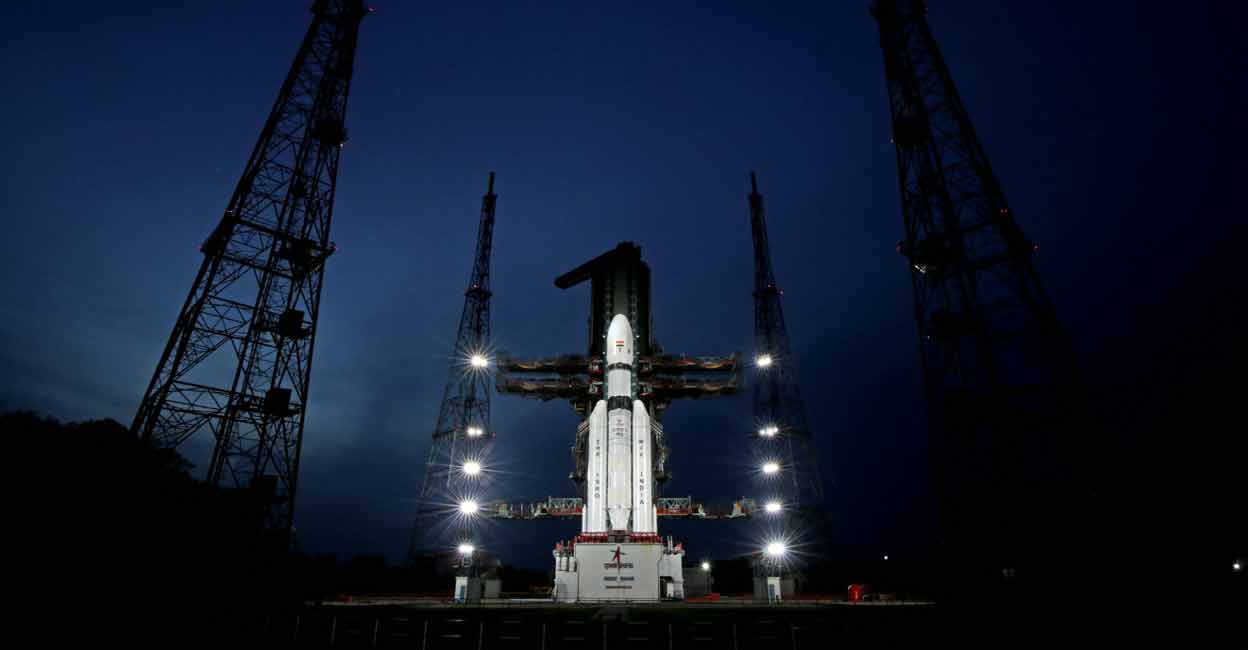Explained | From takeoff to soft landing on moon: All about Chandrayaan-3

Mail This Article
Sriharikota: After a long wait of four years, India's third lunar mission is all set for take off on Friday.
The scientists at the India's space agency ISRO are keen to taste success with a soft landing on lunar surface which will put the country in an elite club of nations that have accomplished the challenging task.
Purpose
Chandrayaan-3 is the third lunar exploration mission ready for take off in the fourth operational mission (M4) of LVM3 launcher. ISRO is crossing new frontiers by demonstrating soft-landing on the lunar surface by its lunar module and demonstrating roving on the lunar terrain, the space agency said. The mission is expected to be supportive to future interplanetary missions.
COMPONENTS
Chandrayaan-3 mission consists of an indigenous propulsion module, lander module and a rover with an objective of developing and demonstrating new technologies required for inter-planetary missions.
Fat Boy: LVM3 rocket
The largest and heaviest LVM3 rocket (formerly GSLV MkIII), fondly called as 'fat boy' by ISRO scientists for its heavylift capability, has completed six consecutive successful missions. Friday's mission is the fourth operational flight of LVM3 which aims to launch the Chandrayaan-3 spacecraft into a Geo Transfer Orbit.
Propulsion module
Propulsion module has the primary task of ferrying the lander and the rover to lunar orbit. The significance about Chandrayaan-3 mission, unlike its unsuccessful predecessor, is that the Propulsion Module has a payload -- SHAPE -- Spectro- polarimetry of Habitable Planet Earth to study earth from lunar orbit.
SHAPE payload
ISRO said the SHAPE is an experimental payload to study the spectro-polarimetric signatures of the Earth in the near-infrared wavelength range.
Lander Module
Apart from the SHAPE payload, the Propulsion Module's main function is to carry the Lander Module from launch vehicle injection orbit to till lander separation.
The lander module after landing on the surface of the moon has payloads including RAMBHA-LP which is to measure the near surface plasma ions and electrons density and its changes, ChaSTE Chandra's Surface Thermo Physical Experiment -- to carry out the measurements of thermal properties of lunar surface near polar region and ILSA (Instrument for Lunar Seismic Activity) to measure seismicity around the landing site and delineating the structure of the lunar crust and mantle.
Rover
The Rover, after the soft-landing, would come out of the lander module and study the surface of the moon through its payloads APXS - Alpha Particle X-Ray Spectrometer - to derive the chemical composition and infer mineralogical composition to further enhance understanding of lunar surface.

Rover, which has a mission life of 1 lunar day (14 Earth days) also has another payload Laser Induced Breakdown Spectroscope (LIBS) to determine the elemental composition of lunar soil and rocks around the lunar landing site, ISRO said.
HOW THE MISSION WILL UNFOLD
Launch at 2.35pm
'Fat boy' LVM3-M4 rocket will carry Chandrayaan-3 on Friday. The ISRO will be launching the mission from Sriharikota spaceport at 2.35 pm on Friday. The launch window has been fixed for July, similar to that of Chandrayaan-2 mission (July 22, 2019) because the earth and moon would be closer to each other during this period of the year.
The soft landing on moon's surface is planned for late August.
Propulsion module to be separated
According to scientists, around 16 minutes after lift-off, propulsion module is expected to get separated from the rocket and would orbit the earth for about 5-6 times in an elliptical cycle with 170 km closest and 36,500 km farthest from earth moving towards the lunar orbit.
Month long journey to moon
The propulsion module along with the lander, after gaining speed would proceed for an over a month long journey towards reaching the orbit of the moon until it goes 100 km above the lunar surface.
Descent for soft landing
After reaching the desired position, the lander module would begin its descent for a soft landing on the south pole region of the moon and this action is expected to take place on August 23 or 24, scientists at ISRO said.
The moon's south pole region has been chosen because the Lunar South Pole remains much larger than that at the North pole. There could be a possibility of presence of water in permanently shadowed areas around it.
(With inputs from AP via PTI.)

